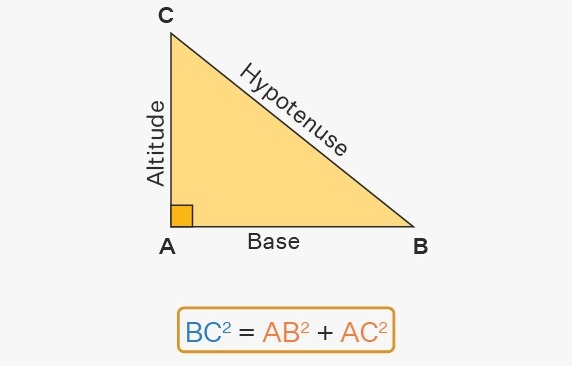Let’s start with the theorem itself. The Pythagorean Theorem states that in a right-angled triangle, the square of the length of the hypotenuse (the side opposite the right angle) is equal to the sum of the squares of the lengths of the other two sides. Mathematically, it can be expressed as:
a^2 + b^2 = c^2

Here, ‘c’ represents the length of the hypotenuse, while ‘a’ and ‘b’ represent the lengths of the other two sides.
Illustrating the Theorem:
To make the concept more tangible for students, let’s consider a right-angled triangle with side lengths ‘a’ and ‘b’ and hypotenuse ‘c’. Imagine a triangle drawn on a piece of graph paper, where each side represents a different axis. Students can physically measure the lengths of the sides and experiment with various triangles to observe the consistency of the theorem.
Practical Applications:
Understanding the Pythagorean Theorem goes beyond classroom exercises. It has practical applications in various fields. Architects use it to ensure the stability of structures, engineers employ it in designing circuits, and astronomers apply it to measure distances in space. By emphasizing these real-world applications, students can appreciate the relevance of mathematical concepts in their daily lives.
Interactive Learning:
To foster a deeper understanding, educators can incorporate interactive activities and multimedia resources. Online simulations, interactive diagrams, and educational games can engage students in a way that traditional lectures may not. Visualization tools help students grasp abstract concepts and develop a solid foundation in geometry.
Historical Context:
Introducing the historical context behind the Pythagorean Theorem can add an extra layer of intrigue. Sharing stories about Pythagoras and the ancient Greek mathematicians not only connects students with the roots of the theorem but also inspires a sense of awe for the timeless nature of mathematical discoveries.
Challenges and Variations:
As students become more comfortable with the basics, encourage them to explore challenges and variations of the Pythagorean Theorem. This could involve solving problems with non-integer side lengths or exploring the concept of Pythagorean triples – sets of three positive integers satisfying the theorem.
Learn more about other theorems here, Maths.ai


